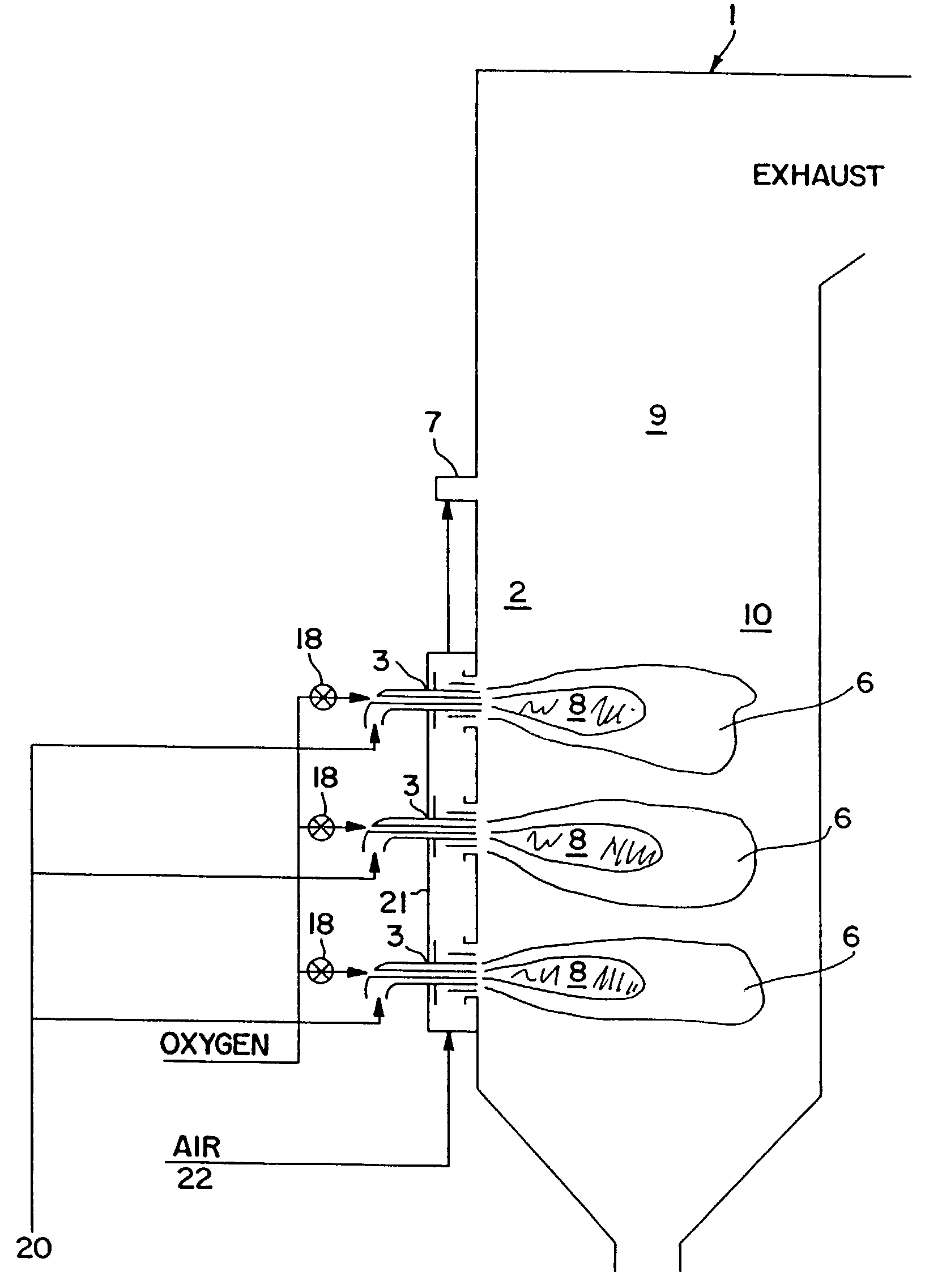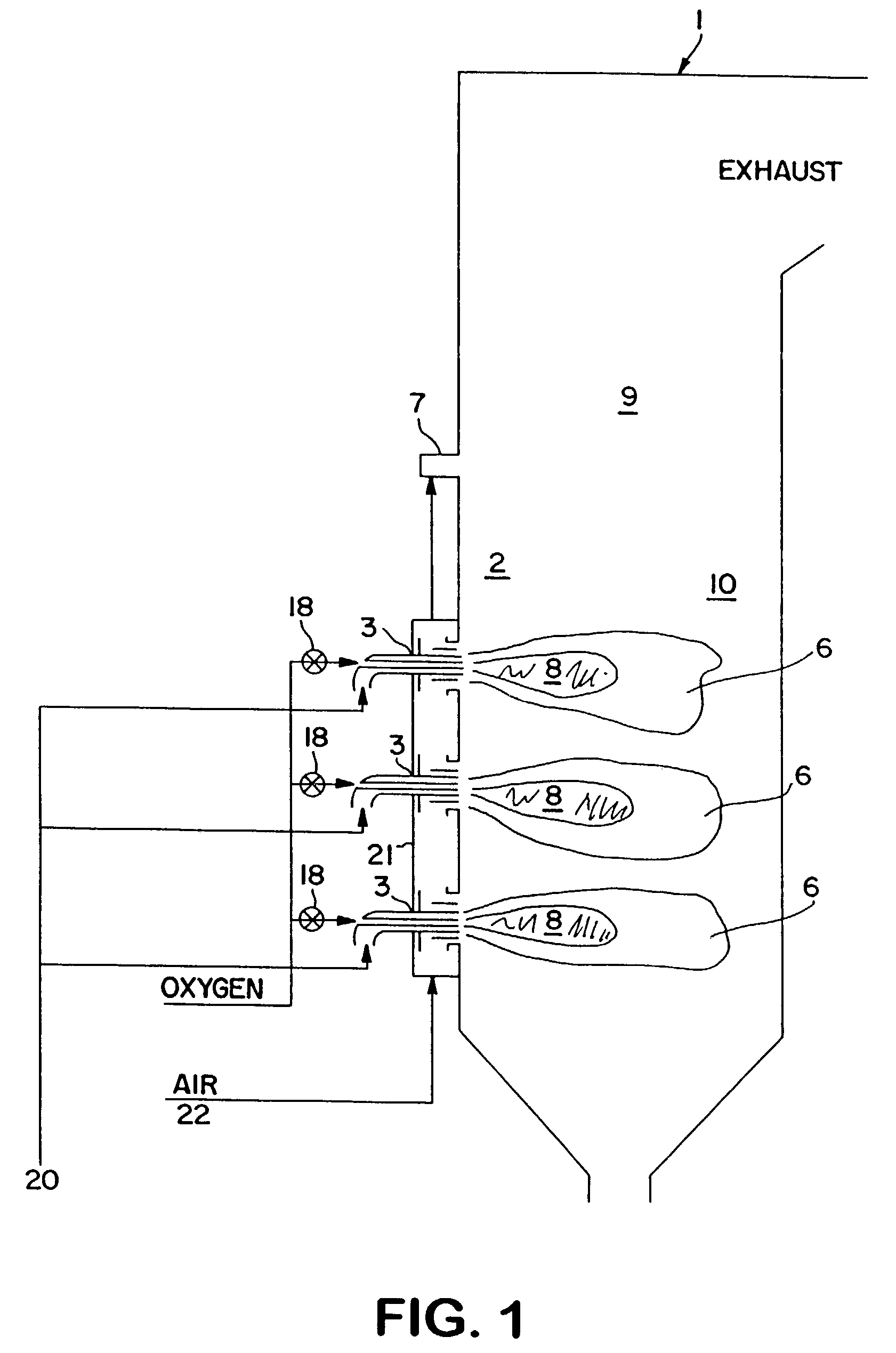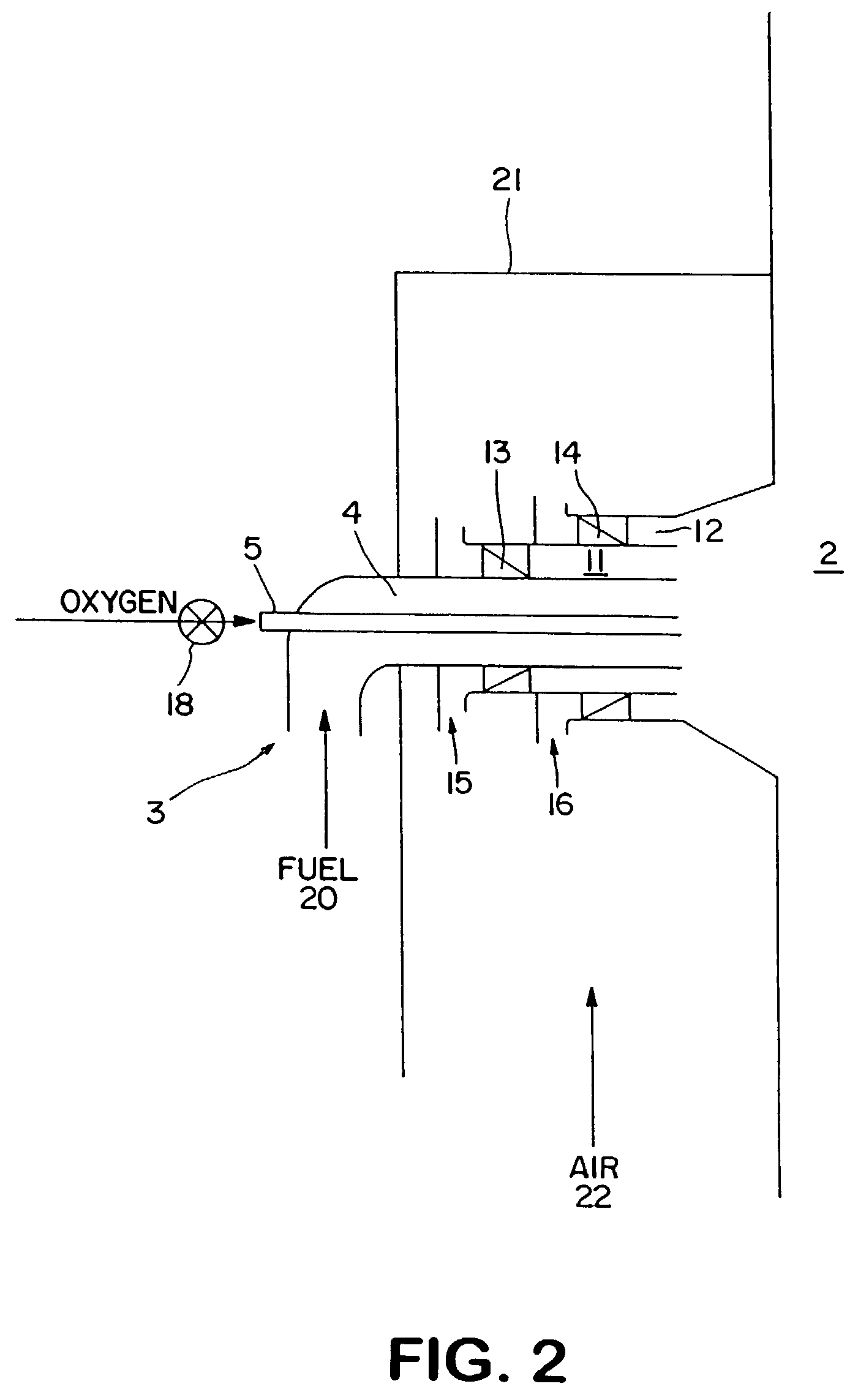Low NOx combustion
- Summary
- Abstract
- Description
- Claims
- Application Information
AI Technical Summary
Benefits of technology
Problems solved by technology
Method used
Image
Examples
example 1
[0090]Oxygen was mixed into the combustion air supplied to the first stage of a 17 kW thermal self-sustained downfired experimental furnace with 6″ internal diameter. The oxygen enriched combustion air was fed to a premixed non-swirled pulverized coal-air burner. High volatile A bituminous coal (Illinois No.6) was used. Oxygen was fed at a rate to replace 20% by volume of the combustion air, on an oxygen equivalent basis, supplied to the primary combustion zone (PCZ). This was equivalent to 10 to 20% of the stoichiometric air requirement. “Over fire air” was injected into the furnace approximately eight feet downstream of the burner face, which provided gas residence time of about 1 second in the PCZ. Sufficient over fire air was injected to keep the overall stoichiometric ratio at approximately 1.2. Although the temperature at the over fire air injection point varied according to the primary combustion zone stoichiometric ratio, it was held as constant between the air (baseline) an...
example 2
[0091]A low NOx coal-air burner was fired at about 4 MMBtu / hr in a refractory lined test furnace with internal dimensions of about 3.6 ft wide×3.6 ft high and 41 ft long. A pair of over fire air ports were located at about 10.5 ft from the burner exit. The burner is similar to one shown in FIG. 2 and consists of a central round passage and several annular passages for coal, air, oxygen and natural gas streams. The central passage was either used to insert an 1.9″ OD and 1.5″ ID oxygen lance or blocked to provide a bluff body to enhance gas recirculation for flame stability. Coal and primary air were injected from the first annular passage of 3.068″ OD and 1.9″ ID. The second annular passage (4.026″ OD and 3.5″ ID) was used to inject either natural gas or oxygen. The third (6.065″ OD and 4.5″ ID) and the fourth (7.981″ OD and 6.625″ ID) annular passages were used for secondary and tertiary air flows and were equipped with variable swirl generators to impart swirling flows. The burner...
example 3
[0098]A commercial low NOx coal-air burner, the RSFC™ burner described in U.S. Pat. No. 5,960,724, was fired at about 24 MMBtu / hr in a refractory lined test furnace with internal dimensions of about 7.5 ft wide×7.5 high and 34 ft long. One or two opposed pairs of over fire air ports were located at about 26 feet from the burner exit. The burner consists of a central round passage and several annular passages for coal, air, oxygen streams. The central passage was used to insert an 1.9″ OD and 1.5″ ID oxygen lance. Coal and primary air were injected from the first annular passage. The second, third and the fourth annular passages were used for secondary, tertiary, and quaternary air flows and were equipped with variable swirl generators to impart swirling flows. The burner is designed to provide an aerodynamically staged combustion condition. A relatively large fuel rich combustion zone is created along the axis of the burner with relatively gradual mixing of tertiary and quaternary a...
PUM
 Login to View More
Login to View More Abstract
Description
Claims
Application Information
 Login to View More
Login to View More - R&D
- Intellectual Property
- Life Sciences
- Materials
- Tech Scout
- Unparalleled Data Quality
- Higher Quality Content
- 60% Fewer Hallucinations
Browse by: Latest US Patents, China's latest patents, Technical Efficacy Thesaurus, Application Domain, Technology Topic, Popular Technical Reports.
© 2025 PatSnap. All rights reserved.Legal|Privacy policy|Modern Slavery Act Transparency Statement|Sitemap|About US| Contact US: help@patsnap.com



